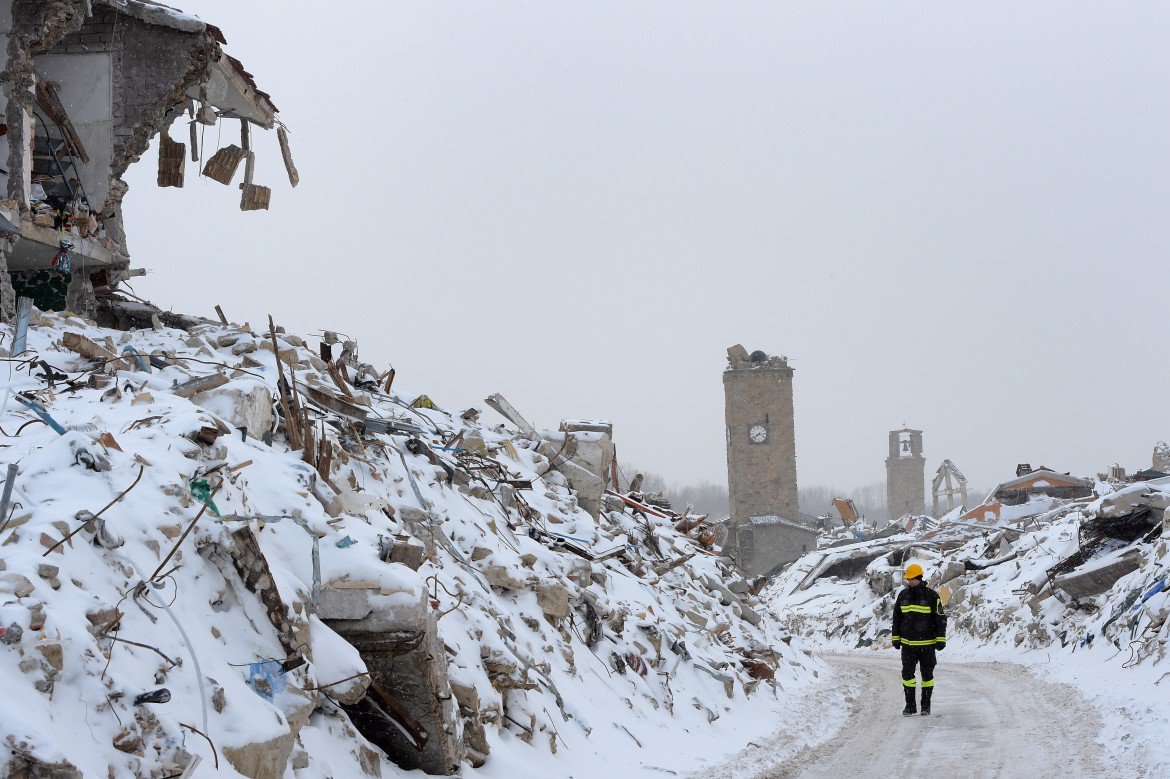Reportage
Italian earthquake victims: ‘The state has abandoned us’
In central Italy, thousands remain in precarious housing positions, and farmers are suffering major financial hardship.

Nothing happened. As we entered the fifth month since the beginning of the seismic crisis that devastated the Apennines between Marche, Umbria, Lazio and Abruzzo, the emergency is still acute, and all the fundamental questions remain open: from reconstruction of wooden houses, to the accommodation of displaced persons, to economic reparations, which in the “earthquake decree” were almost entirely referred to as future measures by the Ministry of Economy and Finance.
But for farmers right now, their financial problems are becoming extremely burdensome, partly because agriculture is the main industry in the vast areas affected by the earthquake. The farming industry group Coldiretti, having raised the alarm in recent days, provided a statistic that says it all: “We estimate that just 15 percent of the structures of animal protection have been built.” They blame bureaucracy for the delays. “We must ease the path for the arrival of the structures, solving the problems of electricity and water hook-up, without which the stables that have been built cannot accommodate animals.”
On Monday, in Norcia, a third residential block was inaugurated, a collective building that accommodates 40 people, erected by an army unit. The structure is adds to the other two blocks opened hastily before Christmas in Camerino and in Umbria.
Details of future residential construction work are patchy. Commissioner Vasco Errani predicted the construction of shelters in Arquata del Tronto, Accumoli and Amatrice by April delivery. But concerns have been raised about the situation in Macerata, where rumors are circulating about a major delay, perhaps even until late summer.
Errani in this regard was very vague: “Since the earthquake of Oct. 30, we are now realizing the need,” he said earlier this year.
The latest civil defense report on the number of displaced people was sent out Jan. 6. The number of people housed stands at 11,222, of which 7,244 are in Marche, 2,387 in Umbria, 585 in Lazio and 1,006 in Umbria. Of these, 8,997 are still in hotels on the Adriatic coast and Lake Trasimeno. Another 900 were housed in modules and in apartments built after past earthquakes, and 300 have been welcomed in shelters. The other 1,000, for their part, continue to live in the halls and structures set up by the various municipalities.
The situation in Visso is emblematic. There, some 30 people were relocated to a kind of village trailer park with shared facilities — bathrooms, showers, kitchen — in a sports complex. “The state has abandoned us,” the residents told a local news reporter.
Those not included in the statistics are incalculable in number. They’ve found accommodation from relatives and friends and have requested support to find other solutions. These are some of the most troubling cases, where rent is unaffordable, according to various testimonies, because of price gouging after the earthquake.
The hoteliers, too, would like to have the earthquake victims relocated by spring in order to avoid sending away more lucrative guests during the summer season.
Originally published at http://ilmanifesto.info/terremoto-lemergenza-e-ancora-in-corso/ on 2017-01-10
